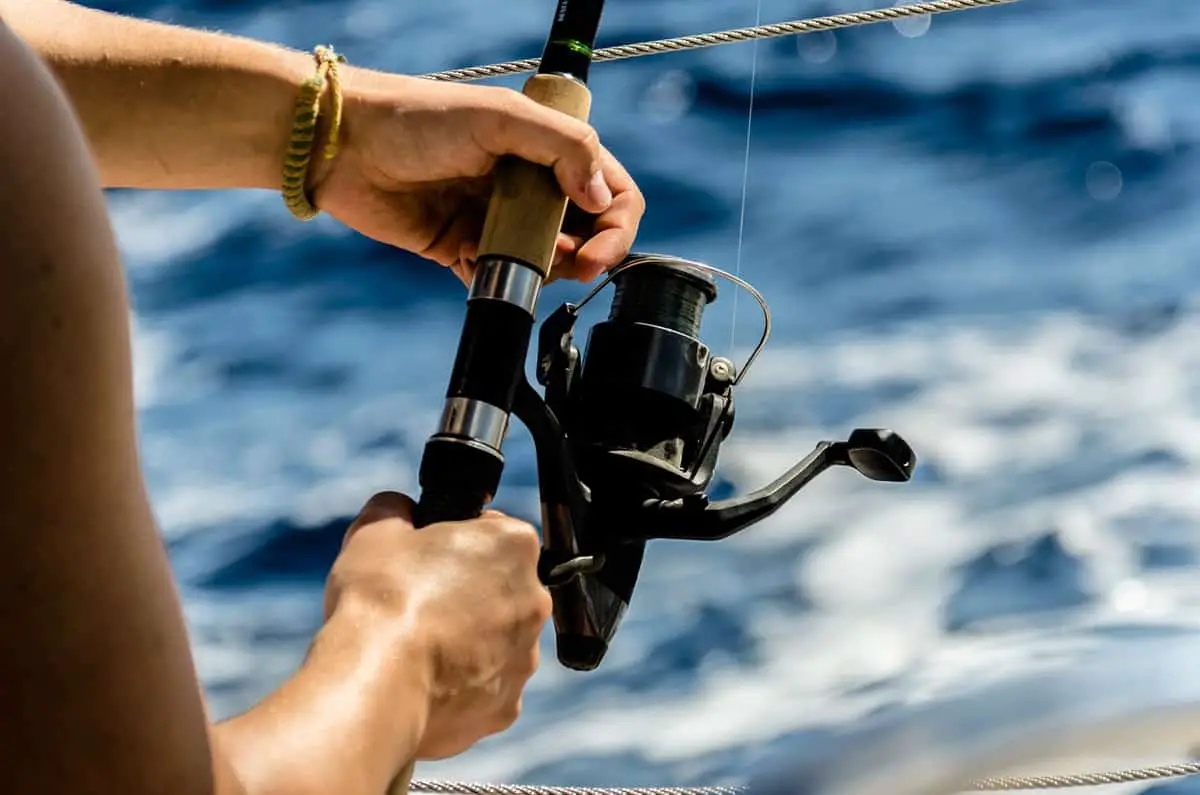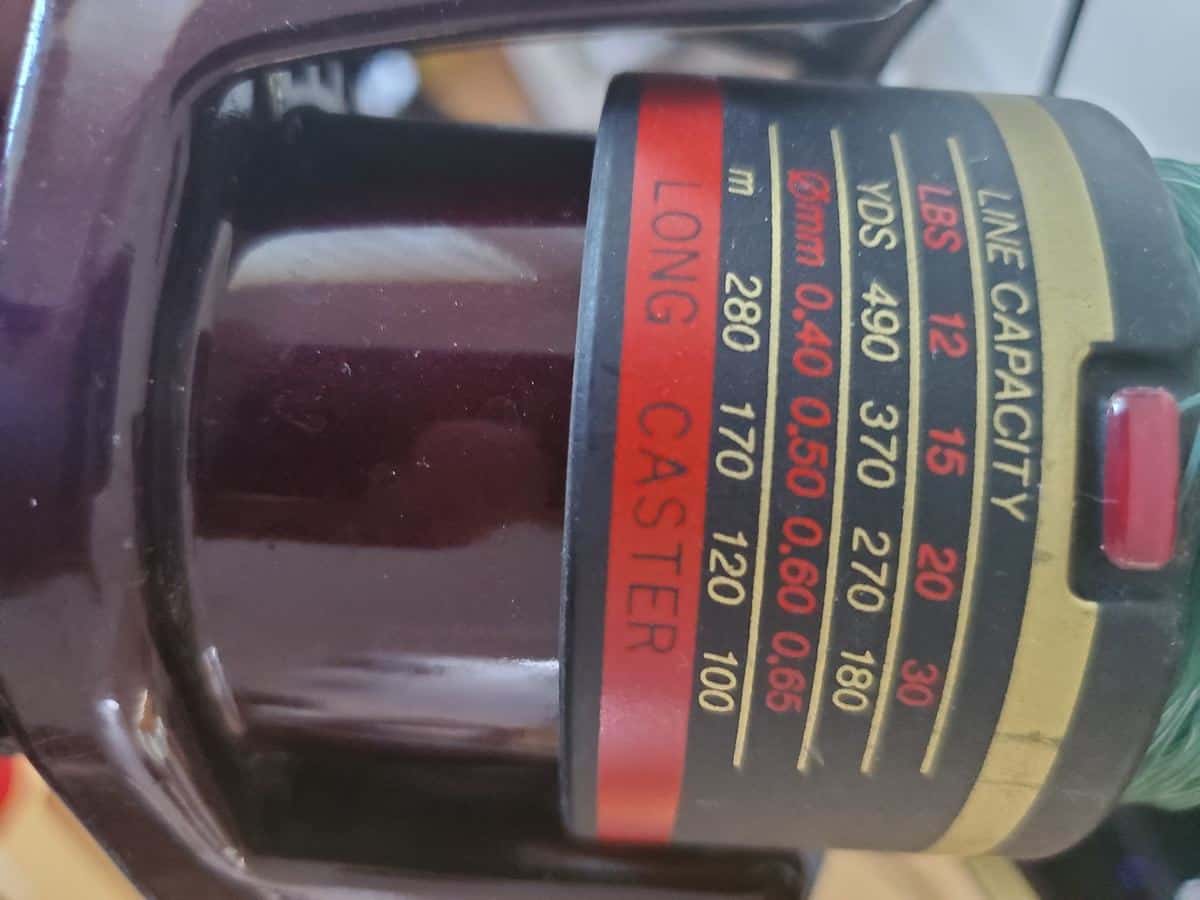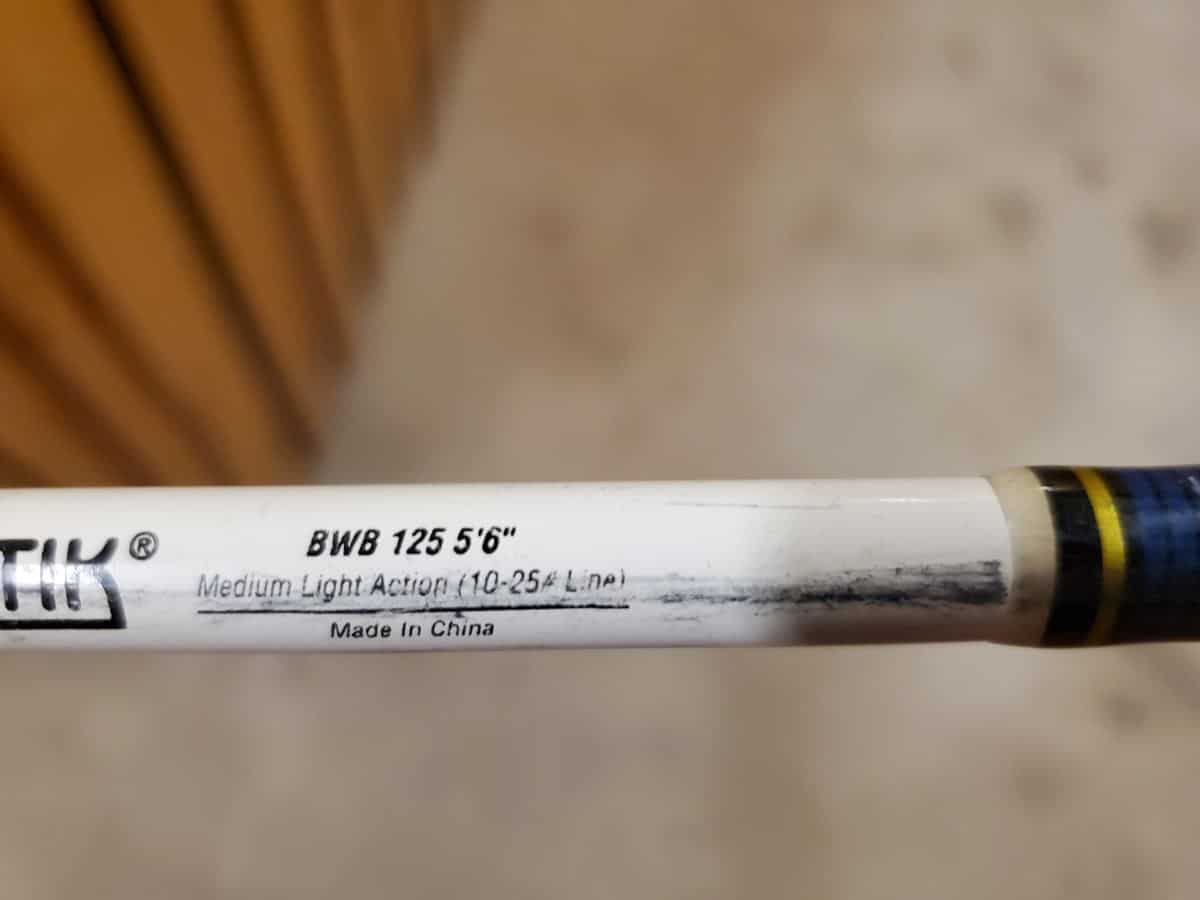
There are many reasons why anglers might consider spooling a fishing line that’s stronger than what their gear is rated for. Intuitively, you would think using a fishing line that’s stronger than your gear would be bad, but is it?
Using fishing line that’s stronger than your gear can be done safely. The line strength should not exceed 1.5 times the maximum rating of the reel or rod. However, if you don’t take the proper precautions and understand the potential risks, you could damage your equipment.
I’ve personally used fishing line that’s stronger than what my rod and reels were rated for without damaging my gear. On the other hand, I’ve seen anglers do the same thing, but they weren’t so lucky.
In this post, I’ll go over the ALL different aspects that you need to consider when using fishing line that’s stronger than your gear.

Using Fishing Line That’s Stronger Than The Reel’s Rating?
Frankly, your reel doesn’t care how strong your line is. Your reel will spool the fishing line the same and can output only so much drag. However, what your reel does care about is how big the fish is.
If the only purpose for you to spool a stronger fishing line is to try to catch larger fish without having to buy a new reel, then you might be putting your reel at risk. There are two main ways you can damage your reel by doing this:
- Breakage or burn-up of internal mechanisms.
- Excessive pulling forces on the reel if the line becomes completely unspooled.
Breakage or burn-up of internal mechanisms: Hooking on to a large enough fish can easily overpower your reel’s drag. If the fish is pulling drag too easily, then our natural reaction is to increase the drag making it harder for the fish.
But if the fish can overpower the drag long enough, then the reel’s internal components may become hot. If these components get hot enough, they may become deformed or damaged.
Heat is generated inside the reel by two spinning plates that are rubbing against each other. This is similar to you rubbing your hands together when you’re hands are cold.
Excessive pulling forces on the reel if the line becomes completely unspooled: If a fish was large to overpower the drag and completely unspool your reel, then your reel is now directly taking all that force.
If you were using a properly sized reel, there would be a low likelihood that the fish would damage your reel. But this is not the case if you’re reading this post.
Unfortunately, if you get to this point with a weaker reel, then you’re hoping for the fish to get tired out before it can cause damage. If you’re concerned about damaging your reel, the other option is to cut the line or try to pull the fish in by hand, but WEAR GLOVES.
Consider Your Reel’s Line Capacity When Using Stronger Lines
A commonly overlooked factor when planning to spool a stronger line is line capacity. By using a stronger line, its line diameter will increase. An increase in line diameter will occupy more room on the reel’s spindle, thus limiting the total amount of line your reel can hold.
Checking to see if you have enough line capacity will make sure you have enough fishing line to go fishing with. There is nothing worst than finding out you don’t have enough fishing line while you’re on the water fishing.
Here is a helpful calculator that you can use to check your line capacity if you’re using a stronger line on a smaller reel.

Using Fishing Line That’s Stronger Than The Rod’s Rating?
The recommended fishing line you should be using with your rod is indicated on the rod. Picking a fishing line that falls within this range ensures you don’t accidentally damage the rod and performs as designed.
However, if you wish to use a stronger fishing line than what the rod is designed for, you need to be careful not to overload the rod or break.
There are two likely scenarios that could result in you breaking your fishing rod:
- Fighting a large fish
- The reel produces more drag than what the rod can handle.
Fighting a Large Fish: When you’re fighting a fish, your rod will bend, absorbing the forces from the fish. If the purpose for you using stronger line is to catch bigger fish, then a fish could potentially produce enough force to break your rod.
There are ways to reduce the likelihood of a fish breaking your rod, such as reducing the amount of drag. Doing this will reduce make it slightly easier for the fish to pull against, but it will reduce the load on the rod. The downside is that you could be fighting the fish for longer. If the fish unspools your entire reel, then the fish will be pulling against the reel directly. If this happens, one of two things could happen:
- The rod will break.
- The reel will break.
The reel produces more drag than what the rod can handle: It’s very difficult to accurately control the amount of drag a reel can produce. A reel does not have meter to read the amount of drag you are applying as you adjust you the drag settings.
Therefore, pay close attention to the rating of your reel compared to the rating on the fishing rod. If your reel has a higher rating than your rod and you accidentally put too much drag, the drag will cause the rod to become overloaded, causing it to break.
Don’t Forget About These Other Fishing Considerations.
It would be best to consider these additional factors that do not relate to the equipment itself but how it may affect your overall fishing experience. These factors are visibility, detectability, and line memory.
Increased Visibility: Using a stronger fishing means the line will become thicker. Thicker lines are more noticeable to fish compared to thinner lines. This may not be an issue depending on the species of fish you’re targeting, but it could affect how fish look at your bait and should be considered.
Increased Underway Vibration: Thicker lines will disturb more water as the line moves across the water. This increased disturbance will result in more vibrations underway. A lot of fish using the vibrations in the water to detect bait and danger. This may cause fish to be suspicious of your bait and not bite.
Increased Line Memory: The amount of line memory is directly proportional to the line thickness. The higher the line memory, the more curls or twists the line will experience as it comes off the reel. The “curling” effect will actually reduce your ability to feel bites and reduce your casting distance and accuracy. This is more of an issue with monofilament lines than braided lines.
Still, Thinking About Spooling Stronger Line? My Final Thoughts
If you’re still thinking about spooling a stronger line than your reel or rod is rated for, I hope I provided you with all the information you need to do this without damaging your gear.
Because you CAN do something does not mean you should.
Ask yourself, is the risk of damaging your rod or reel really worth it? A new rod or reel can cost you hundreds of dollars, but new fishing line could cost you around $30.
Just remember your fishing line, reel, and rod all work together as a complete system. Keeping your fishing line strength within the recommended ranges of each component will ensure that everything is performing as intended.
However, if you’re deciding to use a stronger line, remember all the different factors that could damage your gear and how it may affect your fishing experience.
Happy Fishing and Tight Lines
